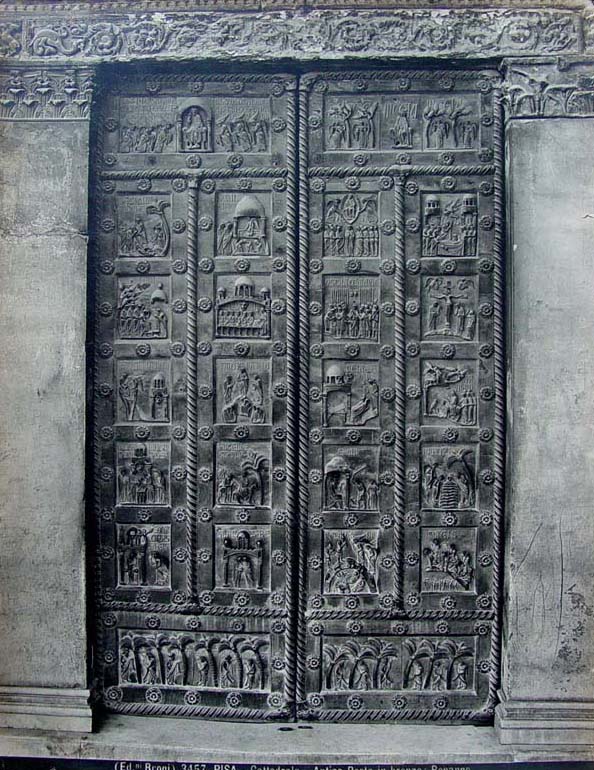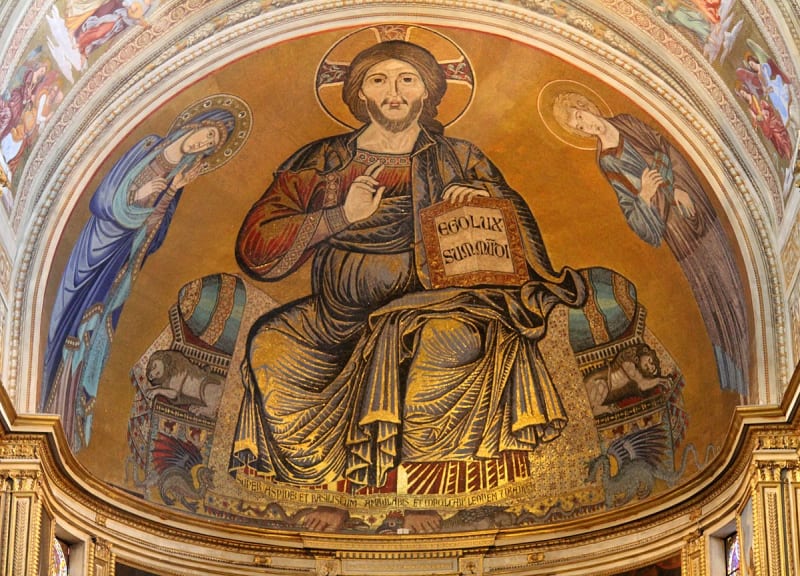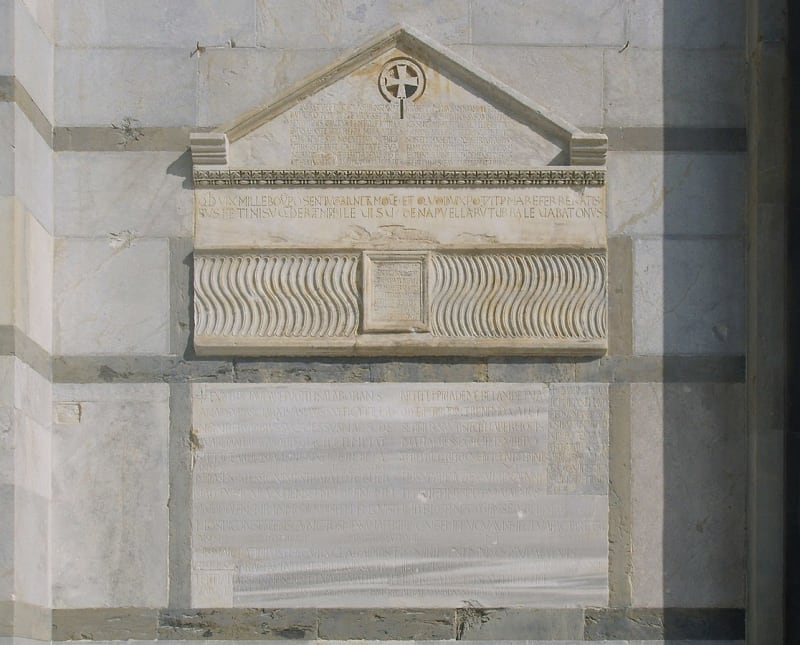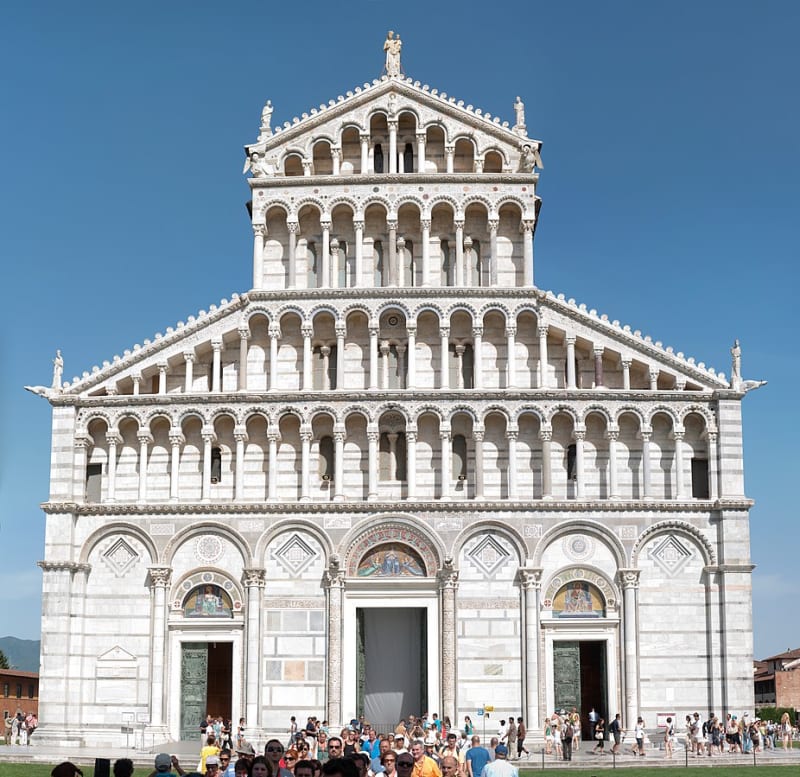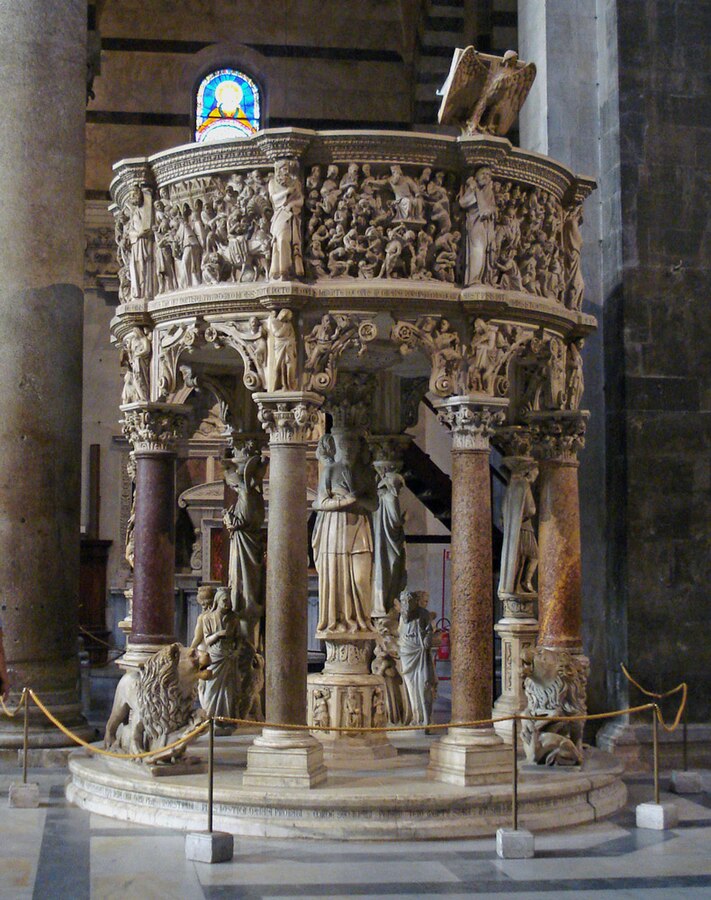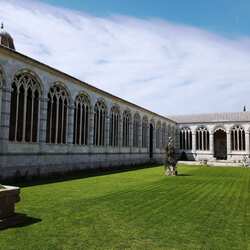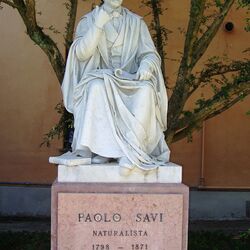Pisa Cathedral
The Pisa Cathedral or Duomo in Pisa is called the Pearl of Cathedral Square, it is a unique building of the XI century with architectural elements of various styles. Pisa's main cathedral is one of the most significant Italian landmarks. Construction began in 1063 and was completed in 1092. Additional extensions and a new facade were built in the 12th century, and the roof was replaced after a fire in 1595.

The history of the Cathedral of Pisa
The construction of the building was based on a project authored by Busceto. It was here that he demonstrated a new and unique style in architecture, later referred to as Pisano-Romanesque.
In the 12th century, architect Rainaldo designed the facade of Pisa Cathedral, it was built by sculptors Guglielmo and Biduino. They used gray stone with abundant application of colored marble elements on it. The change of eras also led to changes in the appearance of the cathedral, especially the interior in the 17th and 18th centuries, but they did not reduce the cultural value of the medieval monument.

Appearances are not deceptive
The shape of the exterior of the Cathedral of Pisa resembles a Greek cross with a massive egg-shaped dome. The entire perimeter of the building is decorated with multi-row arcades and columns. The total length of the building is slightly less than 100 m, the width is 28 m. At the entrance, the original mosaic placer with the crowning statue of the Virgin and Child immediately catches the eye.
Canvases with illustrations based on biblical subjects stand out on the massive bronze gates. Another feature of the exterior design is the belfry with a monolithic base and several archways around it. Above them are six-tiered arched galleries that unite the entire ensemble into a single whole. A replica of a large metal statue of a fantastic hippogriff creature is placed on the semicircular ledge of the eastern facade of the Pisa Cathedral. The original is in the cathedral museum.
Art doesn't burn
The interior of the Cathedral of Pisa is distinguished by black and white marble patterns, smoothed gilded ceilings and a high, painterly painted dome. Between the aisle and the nave there are powerful granite columns of the Byzantine style. Inside the cathedral, you can see many priceless historical artifacts that survived the fire in the XVI century and have survived to this day: a delightful mosaic depicting Christ, the Virgin Mary and the Apostle John; a real example of Italian sculpture of the XIV century, the pulpit of D. Pisano with columns in the form of human bodies and reliefs of dramatic scenes from the New Testament.
Near the altar there is another pulpit depicting episodes from Sacred History, painted by famous Tuscan artists. In addition, the cathedral is a repository of the relics of Saint Ranieri, the patron saint of the city, as well as the Roman Emperor Henry VII, whose tomb is elaborately decorated with sculptural decor. Of course, this is not all that is in the walls of the Cathedral of Pisa. It will take a long time to see all the magnificent works of art.
